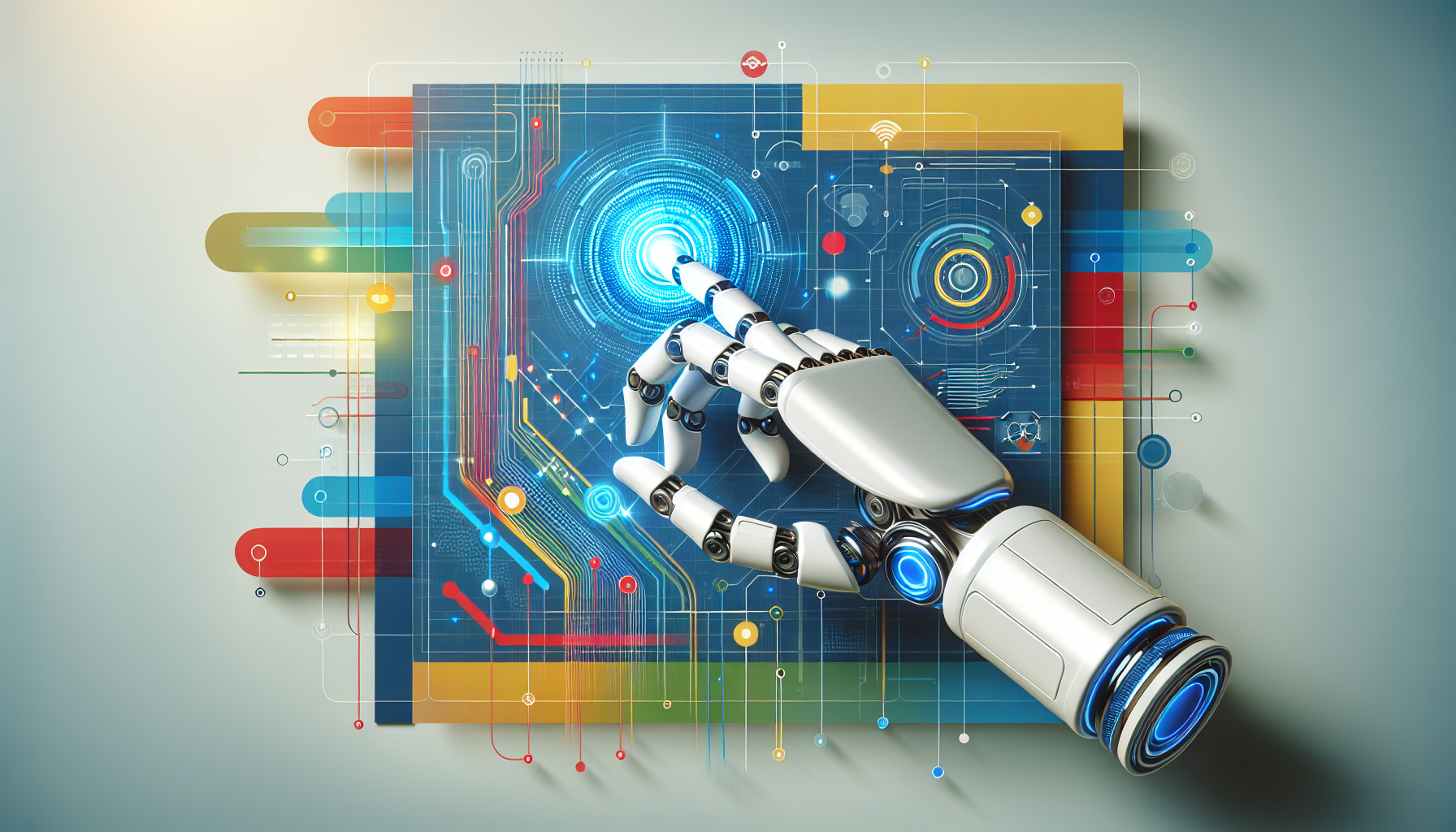Get ready to unlock the potential of free AI automation with Google AI Agents, all without breaking the bank. In an ever-evolving digital landscape, learning how to utilize tools like Visual Studio Code and RU Code extensions can transform how you approach tasks. With step-by-step insights, you’ll explore building apps, crafting landing pages, and blogging, using various free API keys from Google and Brave Search. These resources aim to optimize your workflow and boost performance with the seamless integration of AI models like Google Gemini, Anthropic’s Claude, and Open Router.
This engaging journey is ideal for anyone looking to increase their efficiency and productivity. As you dive deeper, you’ll uncover the intricacies of setting up MCP servers to automate tasks effortlessly. Enhance your skills as you switch between AI models to find what best suits your needs. Join the AI Profit Boardroom to gain more profound insights, discover SOPs, and engage with a community eager to elevate its workflow through AI advancements.

Understanding Google AI Agents
What are Google AI Agents?
Imagine having a digital friend who can handle tasks for you, almost like magic. That’s where Google AI Agents come into play. They are intelligent programs designed to automate repetitive tasks, analyze data, and offer insights to make your life easier. With the help of machine learning algorithms, they learn from vast amounts of data and can assist you with anything from writing blogs to creating intricate landing pages. Essentially, these agents are your behind-the-scenes helpers, continually working to boost productivity without requiring you to micromanage every detail.
Features and Capabilities
Google AI Agents come with a treasure trove of features designed to help you achieve more in less time. They can understand natural language, process enormous datasets, and even predict trends based on historical data. What sets them apart is their adaptability; they improve over time as they gather more information, which enhances their ability to perform tasks more efficiently and accurately. You can task them with handling customer inquiries, optimizing SEO strategies, or even generating creative content. The flexibility and power at their disposal are profound, making them indispensable tools in any tech-savvy individual’s arsenal.
How They Differ from Other AI Solutions
While there are several AI solutions available, Google AI Agents bring a unique edge because of their integration with the extensive suite of Google services. This connection allows them to tap into a broader ecosystem of tools, offering seamless operation and enhanced functionalities. Unlike standalone AI solutions that might require third-party plug-ins or extensive custom coding for integration, Google AI Agents blend effortlessly into your existing Google environment. Additionally, they leverage Google’s reliable infrastructure, ensuring robust performance and lower instances of downtime, a vital consideration for any business relying on AI technologies for everyday operations.
Setting Up Visual Studio Code and RU Code
Installing Visual Studio Code
Getting started with visual coding is a breeze when you have the right tools, and Visual Studio Code (VS Code) is the perfect companion for this journey. To install VS Code, visit the official website and download the version compatible with your operating system. Once the download is complete, run the installer and follow the straightforward prompts. Voila! You’re ready to explore the world of coding. The best part? VS Code is incredibly lightweight and supports numerous programming languages, meaning it’s ready to tackle whatever project you throw its way.
Integrating RU Code Extensions
Now that you have VS Code set up, it’s time to enhance its capabilities by integrating RU Code extensions. These extensions are like charming little elves ready to automate your code writing, debugging, and even testing. Navigate to the Extensions pane in VS Code and search for RU Code. Click install, and just like that, your coding environment will gain superpowers, making tasks like syntax highlighting, auto-completions, and integrated debugging more efficient than ever before.
Configuring the Development Environment
Once VS Code and RU Code extensions are installed, setting up your development environment is essential. You’ll want to configure your settings to match your workflow preferences. Go to the file menu, find the preferences, and then navigate to the settings. Here, you can adjust everything from font size to the behavior of various programming language integrations. Don’t forget to set up version control with Git if you’ll be collaborating with others or simply want to keep an organized track of your work. This setup will ensure that your projects are managed efficiently and that any issues are quickly addressed.
Configuring Google Gemini API
Securing Necessary API Keys
To unlock the full potential of Google Gemini APIs, you’ll need to first secure your API keys. This step is akin to finding a golden ticket that grants you access to a world of functionalities. Head over to the Google Cloud Platform, create a new project, and enable access to the Gemini API. Once that’s done, navigate to the ‘Credentials’ section and generate a new API key. Make sure to store it safely, as it’s essential for linking your projects with Google’s powerful AI capabilities.
Setting Up API Access in VS Code
With your API key in hand, it’s time to configure API access within VS Code. This integration ensures that your coding work can comfortably interact with Google’s services. Create or open a configuration file in your project and add your API key, making sure it’s securely stored. You can use environment variables or a secure vault to protect sensitive information. Proper configuration will allow seamless communication between your code and Google’s AI infrastructure, streamlining tasks that require complex data processing.
Testing and Verifying the API Connection
Before diving headfirst into building projects, you’ll want to verify that everything is connected properly. You can do this by writing a simple API call from your VS Code setup and checking if it returns the expected results. If there are any issues, revisit your API configurations and check your network settings. Once verified, this connection will be the backbone of your AI-powered applications, allowing them to retrieve and process data effectively.
Utilizing MCP Servers with AI Agents
What are MCP Servers?
MCP Servers, or Multi-Connect Protocol Servers, are specialized servers that handle multiple data streams concurrently, enhancing the efficiency and performance of your AI operations. Think of MCP Servers as proficient jugglers, capable of managing and optimizing various tasks, ensuring your AI agents have the resources they need to work at peak performance levels. They streamline processes, reduce latency, and handle data-intensive tasks with aplomb.
Integrating MCP Servers for Enhanced Performance
Integrating MCP Servers into your AI setup is akin to adding a high-performance engine to your car. You’ll need to establish a connection between your servers and the AI agents, typically done through secure tunneling and network protocols. This integration will allow you to offload resource-intensive tasks from local machines to the server, optimizing performance and ensuring your applications run smoothly. Regular monitoring will be necessary to ensure that everything operates at optimal capacity.
Monitoring and Troubleshooting Server Connections
To make the most of your MCP Servers, you’ll need to keep a close eye on their performance. Monitoring tools can help track server load and bandwidth, offering insights into any potential bottlenecks. If issues do arise, troubleshooting steps often include checking server logs, reviewing code for errors, and ensuring network security protocols are not hindering performance. Efficient monitoring will ensure that your AI applications remain responsive and reliable.

Creating and Automating Tasks with AI Agents
Identifying Tasks for Automation
Before embarking on automation, it’s crucial to identify which tasks are ripe for automation. Start by listing out repetitive and time-consuming chores that don’t require much creative input or human judgment. Tasks like data entry, report generation, or basic customer support queries are perfect candidates. The key is to pinpoint where AI can save you the most time and focus your energy on tasks that truly require your expertise.
Setting Up Automation Workflows
Once you’ve identified potential tasks, it’s time to set up automation workflows. This process involves creating a logic pathway that the AI will follow to complete tasks from start to finish. Using tools like Google’s Workflow Builder, you can map out each step in the process, allocate the necessary resources, and define triggers for specific actions. This setup will allow your AI agents to take over the mundane, letting you focus on more strategic activities.
Examples of Automated Tasks
Imagine your AI agents handling tasks like sending out welcome emails to new customers or compiling daily sales reports without any human intervention. These are just a few examples of what automation can accomplish. They can also schedule social media posts, update databases with the latest information, and even conduct preliminary market research by analyzing trends and competitor activities. The versatility of AI agents in handling diverse tasks is truly remarkable.
Advanced AI Agent Configurations
Adjusting Settings for Optimal Performance
To extract the best performance from your AI agents, it’s vital to adjust their settings as per your specific needs. Tweak parameters like processing speed, resource allocation, and automatic updates. Regularly update the AI model to the latest version to access new features and improvements. Fine-tuning these settings ensures that your AI agent is always performing at its peak capabilities, delivering efficient and timely results.
Customizing AI Outputs
One of the most exciting aspects of working with AI agents is the ability to tailor their outputs to meet your requirements. You can configure the AI to follow particular guidelines or mirror your unique style and tone, especially useful in marketing and content creation. Customize responses based on user interactions, and create detailed templates for various outputs, making your AI-generated work highly personalized and aligned with your brand’s voice.
Security Considerations and Best Practices
In our increasingly digital world, security is paramount. Ensure your AI environment is secure by routinely updating security protocols and employing encryption for sensitive data exchanges. Regularly audit your AI systems to detect vulnerabilities quickly. Implement role-based access controls and two-factor authentication to add extra layers of security. These best practices will safeguard your systems and data integrity, protecting your AI operations from potential threats.

Building Apps and Tools with AI
Brainstorming App Ideas
Harnessing the power of AI opens up a world of possibilities for app development. Start by brainstorming ideas where AI can solve everyday challenges. Could you create an app that offers personalized shopping recommendations or one that automates routine financial tracking? The key is to think about the needs of your target audience and how AI can make these experiences smoother, more efficient, or more engaging.
Developing Apps with AI Support
With your idea in hand, it’s time to delve into development. Incorporate AI functionalities that can analyze data, automate processes, or enhance user interaction. Use development frameworks that support AI integration, like TensorFlow or PyTorch, which provide extensive libraries for building AI models. Throughout development, maintain a focus on user experience and ensure that the AI enhances, rather than complicates, your app’s usability.
Testing and Deploying AI-Powered Apps
After development comes rigorous testing to ensure the app’s reliability and effectiveness. Test your AI functionalities comprehensively to ensure they respond appropriately and deliver accurate results. Gather feedback from beta testers to identify areas of improvement and make necessary adjustments. Once satisfied, deploy your app to the relevant platforms, whether it’s the Google Play Store, the Apple App Store, or a web-based platform. Keep an eye on user feedback for further refinements and updates.
Enhancing UI with Paid APIs
When to Consider Paid APIs
While free APIs provide excellent starting points, sometimes you’ll need to consider paid options for more advanced features, higher reliability, or additional support. Paid APIs often come with better documentation, faster response times, and dedicated customer service. If your application requires high uptime, extensive data, or superior performance, investing in a paid API can provide the edge needed for an exceptional user experience.
Integrating Paid APIs for UI Improvements
Enhancing the user interface (UI) with paid APIs can significantly improve your application’s appeal and functionality. These APIs often offer advanced visual elements, seamless integration with third-party services, and enhanced processing power for more dynamic content delivery. By integrating such APIs, you can create a more intuitive, engaging, and responsive user interface, ensuring users enjoy a smooth and attractive experience.
Comparing Free vs. Paid API Models
When deciding between free and paid APIs, consider factors like budget, project scope, and necessary functionalities. Free APIs are great for prototypes and small-scale projects with limited needs. However, for projects requiring more robust capabilities, data analysis, or user support, paid APIs might offer more comprehensive solutions. Comparing the cost against the benefits will help you make an informed decision that aligns with your project goals and resources.
Exploring Alternative AI Models
Overview of AI Models like Google Gemini
Google Gemini represents a class of AI models aimed at enhancing productivity through advanced machine learning. Like its counterparts, it leverages natural language processing and data analytics to automate tasks and provide insightful analysis. Each AI model, including Gemini, comes with unique strengths, whether it’s superior text generation, image analysis, or predictive modeling, giving you options to choose based on specific needs.
Considerations for Using Anthropic’s Claude
Anthropic’s Claude is another powerful AI model known for its ethical focus and safe AI use. When considering Claude, prioritize applications where ethical considerations and user safety are paramount. This model’s architecture emphasizes understanding and responding to user queries while maintaining high standards of data privacy and ethical handling, making it an excellent choice for sensitive applications.
Switching Between Models Through Open Router
Flexibility is key in AI development, and platforms like Open Router allow you to switch between different AI models such as Google Gemini and Anthropic’s Claude. By using Open Router, you can adapt your application to utilize the strengths of various models depending on the task at hand, ensuring optimal performance and output quality. This dynamic approach gives you the freedom to experiment and find the best model for your specific needs.
Conclusion
Summing Up the Benefits of Using Google AI Agents
Google AI Agents are a transformative tool in today’s digital landscape, offering unparalleled capabilities in automation, data analysis, and user interaction. With seamless integration into Google’s infrastructure, these agents enhance productivity and streamline workflows, allowing you to focus on more strategic initiatives. Their flexibility and continuous learning ensure they remain valuable assets that grow alongside your business.
Final Thoughts on Unlocking Free AI Automation
Embracing free AI automation is about more than just efficiency – it’s about innovation and opportunity. By leveraging Google AI Agents alongside tools like Visual Studio Code and RU Code Extensions, you can unlock new avenues for growth and creativity. These tools enable you to not only automate mundane tasks but also to innovate and push the boundaries of what’s possible in your domain.
Encouragement to Engage with the Community and Tools
The journey with AI is one of constant learning and evolution. Engage with communities and explore the myriad tools available to deepen your understanding and capabilities. Whether through forums, courses, or collaborative projects, connecting with others can provide valuable insights and drive progress. Embrace these resources to further your skills and optimize your workflows for a future where AI plays an even greater role in everyday life.

